aether architecture - Interaction Hacking Workshop
2004 fall
Konstfack University College for Art crafts and Design, Stockholm
Teachers
Adam Somlai-Fischer, Jonas Öquist
Student work exhibited at Future Design Days, Stockholm and presented at Viper, Basel
Interaction Hacking was a one week workshop to invite 1st year design students to play around with technology. After 2 days of reading research, students were introduced to a selection of electronic toys, that they reverse-engineered to hack into their interaction, and create new social spaces mediated with technology.
The method was very non-technological, students had no prior understanding to electronics, still they managed to create very valuable results in 2 days, as shown on the right side.
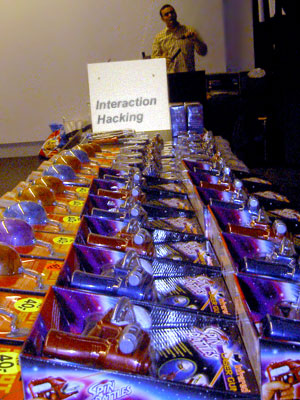
Robot mouse, Cyber shooter and 10€ radio controlled cars...
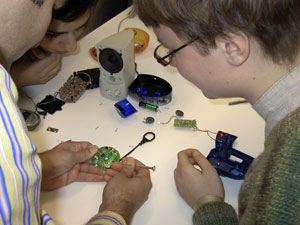
..taken apart...
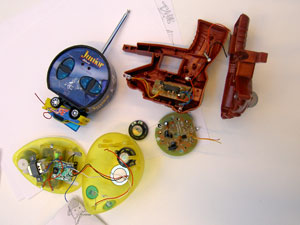
..result in a set of sound sensors, IR communication, radio controllers, and so on, a set of inputs and effects, creating a large number of possible scenarios once combined.
Workshop Schedule
Mon-Tue research
reading list
Hardspace, Softspace and the possibilities of open source architecture [pdf]
by Usman Haque
"...An alternative approach is to think of architecture as software: the dynamic and ephemeral sounds, smells, temperatures even radio waves that surround us. One might also consider the social infrastructures that underpin our designed spaces. Pushing this analogy even further, we can think of architecture as a whole as an “operating system”, within which people create their own programmes for spatial interaction"
Natural Interaction [pdf] by Alessandro Valli, Media Integration and Communication Center, University of Florence.
"...describe the fundamental properties of natural interaction issues,
methods and systems, using mainly research prototypes as
examples"
Awareness spaces [pdf] by Nitin Sawhney, MIT Media Laboratory
"...lay out a framework within which we can start to better understand the key aspects for designing computer-mediated social awareness. The paper surveys the evolution of Media Spaces from notions of distributed video, continuous connectivity and face-to-face vs. peripheral monitoring of distributed participants"
Physical computing [html] by Tom Igoe
"...A lot of beginning computer interface design instruction takes the computer hardware for given -- namely, that there is a keyboard, a screen, perhaps speakers, and a mouse -- and concentrates on teaching the software necessary to design within those boundaries. In physical computing, we take the human body as a given, and attempt to design within the limits of its expression"
Systems thinking, Complexity science [html] by CALResCo
"..Simulations and iterations on a computer are the essence of Complex Systems research, and allow us to explore the infinite space of possible systems in a way not previously possible. As we enter the third millennium we will see the value of this approach, as a way to analyse and understand systems too complex for Newtonian analysis and too simple for Statistical averaging - in other words, Life"
Wed Lecture on programmable spaces
by Adam Somlai-Fischer, around www.aether.hu and inductionhouse
joining for the rest of the week, Jonas Öquist [html] creative director
Wed-Fri Hands on prototyping
You'll be learning some simple methods how to re-appropriate existing digital tools. (toys and interfaces). This quick method will be used to produce a functioning interactive prototype for Friday's presentation.
You will be provided with 12 Spin Battles Laser guns, 12 Robot Mice and 12 Remote Controlled cars. In groups of 2-3, you should explore the possibilities of the technologies that lie within these toys, first to understand and catalogue these specific inputs and outputs.
The main goal is to spend the rest of the week producing a functioning interactive prototype, for each group, that takes some possibilities hidden in these toys and finds spaces, artifacts and foremost social situations where these interactions can have a meaningful application.
We'll spend thursday together in thinking with you to discuss ideas; but the main method is quick and dirty testing, trying and probing how your interaction idea feels. Due to the possibilities of new functions creating new users, and the lack of reference points interaction design relies heavily on the experience, that has to be tested for real, normal representational methods like drawings here don't work so well.
Some reference workshops: translations, DIY media architecture and ThingsThatDoTheirOwnThing
Workshop results
Hide and Seek
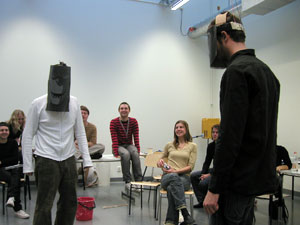
Hide and Seek helmets, game mod without vision: the shielded helmets using infrared sensors are triggered by each other, so once the seeker faces the target, the target helmet starts beeping.
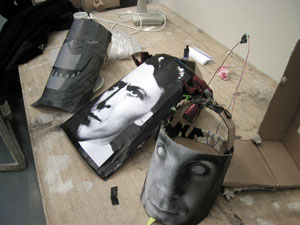
Fluffies
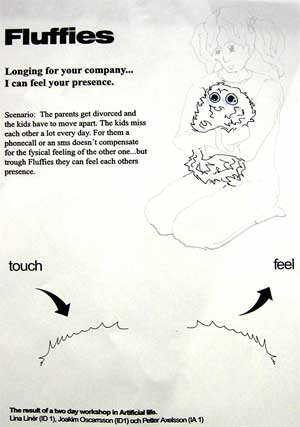
Fluffies are
remote presence, tactile communication devices mediating the most emotional human sense via radio waves.
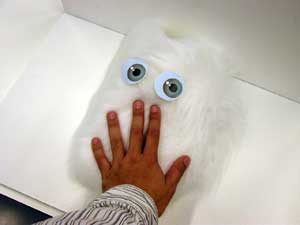
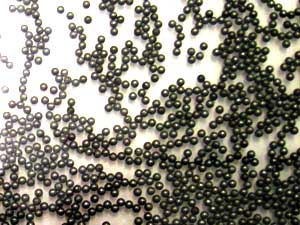
A use-responsive auto-generated pattern for a coffee table
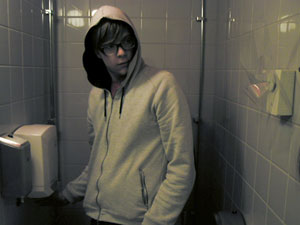
Triggered by the hot air dryer in the toilet, through a chain of networked toys, a subtle blow of air reached the unaware user on his scruff.
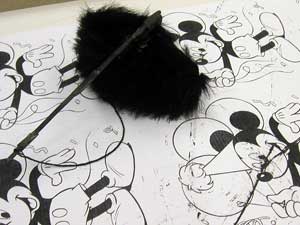
My name is not Mickey, is an evil robot-mouse painter that aims at destroying its sweet cousin's image
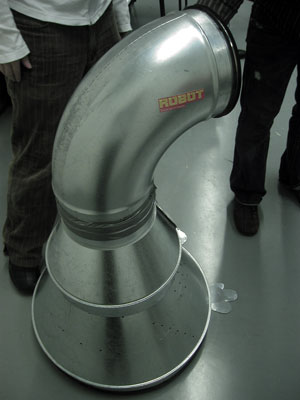
Robotic drum-machine generated very curious mechanical sounds responding to its environment